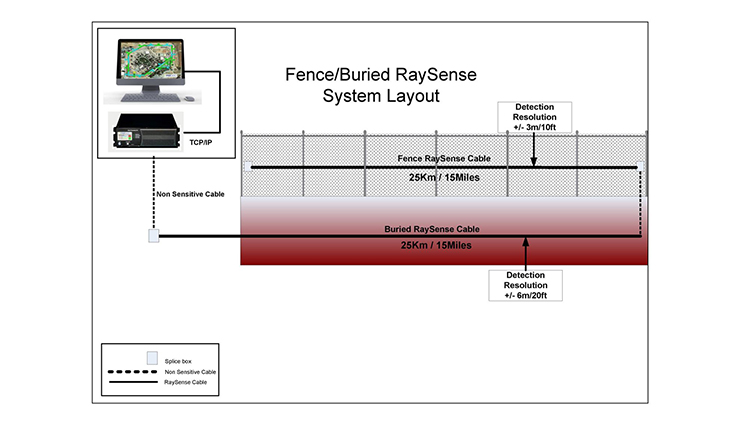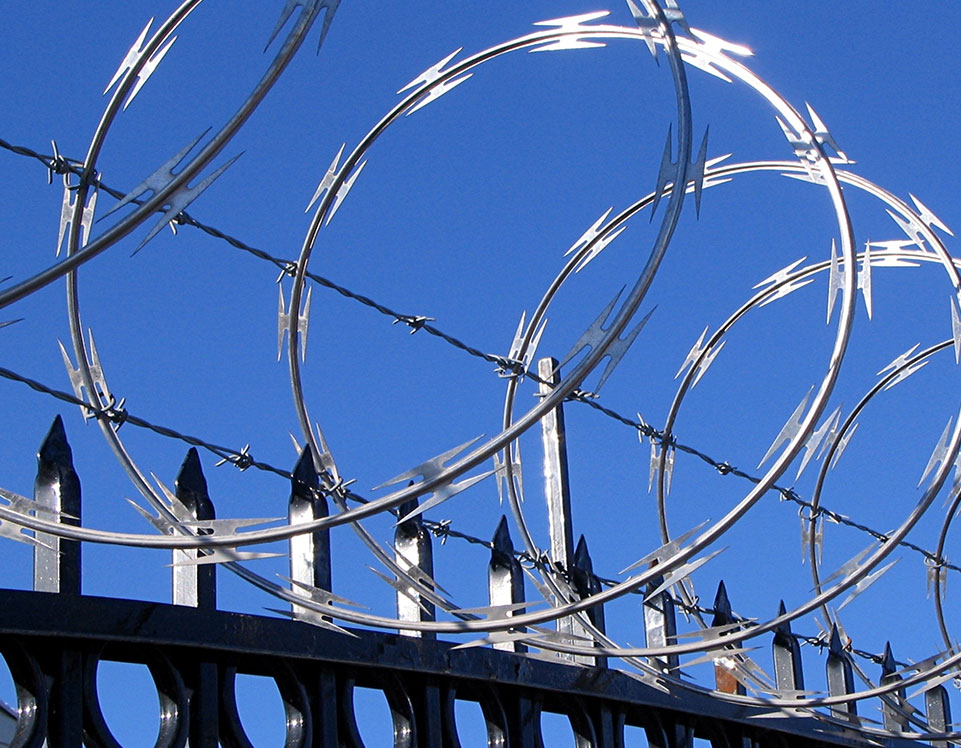Improve Your Safety With Advanced Fiber Optic Safety Solutions
In an era where safety and security is paramount, advanced fiber optic safety systems provide a compelling service for enhancing safety and security across different settings. These systems not only flaunt remarkable data transfer and rate for high-resolution security however also provide exceptional strength versus external interferences. As companies increasingly seek trustworthy means to shield their properties, the combination of cutting-edge technologies like AI and IoT within fiber optic frameworks raises crucial concerns concerning their performance compared to standard systems. What implications do these innovations hold for future protection actions?
Advantages of Fiber Optic Safety
Utilizing the benefits of fiber optic technology considerably enhances safety and security systems across various applications. One of the primary advantages is the boosted data transfer capability, permitting the transmission of large quantities of information at broadband. This is especially critical for real-time video monitoring, where high-resolution feeds can be sent out without latency, making certain instant reaction abilities.
Furthermore, fiber optics show superior resistance to electro-magnetic disturbance, which is vital in environments with potential signal interruptions. This integrity guarantees regular performance in vital security operations. Moreover, fiber optic cords are much less vulnerable to touching and unapproved accessibility contrasted to typical copper electrical wiring, thereby improving data honesty and discretion.
One more significant benefit is the toughness of fiber optic systems; they are much more resistant to ecological variables such as wetness, temperature changes, and harsh materials. This strength translates to decrease upkeep prices and longer life-spans for protection installations.
Lastly, the light-weight nature of fiber optic wires assists in simpler setup and routing, specifically in intricate frameworks (fiber optic security system). Ultimately, the assimilation of fiber optic technology right into safety and security systems not just boosts security procedures however likewise maximizes functional efficiency
Key Functions to Take Into Consideration
When evaluating fiber optic security systems, numerous vital features need to be considered to guarantee optimal performance and performance. Analyze the system's discovery array and level of sensitivity; a comprehensive array permits for monitoring big areas, while high sensitivity ensures that even minor disruptions are spotted without delay.
Following, think about the integration capabilities of the system. A fiber optic safety system must effortlessly user interface with existing protection procedures such as cameras and alarm systems, developing a natural safety and security network.
Durability and environmental resistance are also crucial functions. Guarantee that the system is developed to hold up against extreme climate condition and possible physical threats, as this will certainly extend its functional life-span.

Last but not least, look into the scalability of the system. A robust fiber optic security system need to be conveniently expandable to fit future demands without considerable overhauls. By thoroughly taking into consideration these features, you can choose a fiber optic safety remedy that boosts security and safety and security in your atmosphere.
Installment Refine Summary
To efficiently carry out a fiber optic safety and security system, a methodical setup process is necessary. This procedure begins with a comprehensive site assessment to figure out the specific security demands and to determine optimal areas for fiber optic wires and safety gadgets. Following this assessment, the setup group will establish an in-depth strategy, consisting of cable pathways, needed tools, and conformity with local guidelines.
Following, the setup includes laying the fiber optic cable televisions, guaranteeing they are secured from environmental factors and physical damage. Appropriate handling techniques are essential, as fiber optic cable televisions are delicate and can be quickly harmed. After the cabling is mounted, ports and discontinuations are diligently completed to ensure signal integrity.
The succeeding stage consists of setting up protection devices such as Find Out More cams, motion detectors, and alarm, all incorporated with the fiber optic network. Rigorous testing is carried out to validate that all elements are operating properly and to ensure optimum efficiency.

Contrasting Fiber Optic to Traditional Equipments
The advancement of protection modern technology has caused considerable advancements in the contrast between fiber optic systems and standard copper-based systems. Fiber optic systems utilize light to send information, using exceptional transmission capacity and speed compared to their copper equivalents. This leads to improved data transmission capacities, making optical fiber optimal for high-resolution video monitoring and real-time monitoring.
Additionally, fiber optic wires are resistant to electromagnetic disturbance, decreasing the possibility of signal destruction brought on by exterior variables. This characteristic guarantees consistent performance, even in tough atmospheres. In contrast, standard copper systems are much more prone to interference, causing potential vulnerabilities in protection applications.
Toughness is an additional advantage of fiber optic systems. They are much less prone to damage from ecological factors such as moisture and temperature level changes, which can compromise copper web link wiring. Fiber optics are lighter and thinner, allowing for much easier installment and reduced physical footprint.
Nonetheless, typical systems tend to have reduced first costs, making them eye-catching for budget-conscious projects. While fiber optic systems may need a higher upfront financial investment, their lasting advantages-- such as lower maintenance expenses and higher reliability-- commonly exceed the initial cost, positioning them as an exceptional selection for contemporary security needs.
Future Fads in Security Technology
Emerging trends in protection modern technology are poised to transform the landscape of surveillance and risk discovery - fiber optic security system. As companies progressively face sophisticated risks, developments such as expert system (AI) and device understanding (ML) are ending up being integral to safety systems. These modern technologies improve the ability of fiber optic systems by enabling real-time information analysis, determining abnormalities, and automating responses to potential breaches
Furthermore, the integration of the Internet of Points (IoT) is revolutionizing safety and security structures. IoT devices can offer comprehensive situational recognition and assist in smooth interaction between various protection components. This interconnectedness enables more effective tracking and faster incident response times.
Biometric authentication is also obtaining energy, providing a higher level of security with distinct physical attributes. As this innovation evolves, it is most likely browse around this site to be included into fiber optic systems for boosted gain access to control.
Conclusion
In conclusion, progressed fiber optic safety and security systems represent a considerable improvement in safety and surveillance technology. Their superior bandwidth, resistance to disturbance, and resilience promote dependable surveillance and data integrity. As these systems integrate AI and IoT capacities, they enhance the overall security structure, making sure durable defense for properties. The change from standard systems to fiber optic services shows an expanding pattern in the direction of a lot more reliable and effective protection steps in an increasingly complex technological landscape.